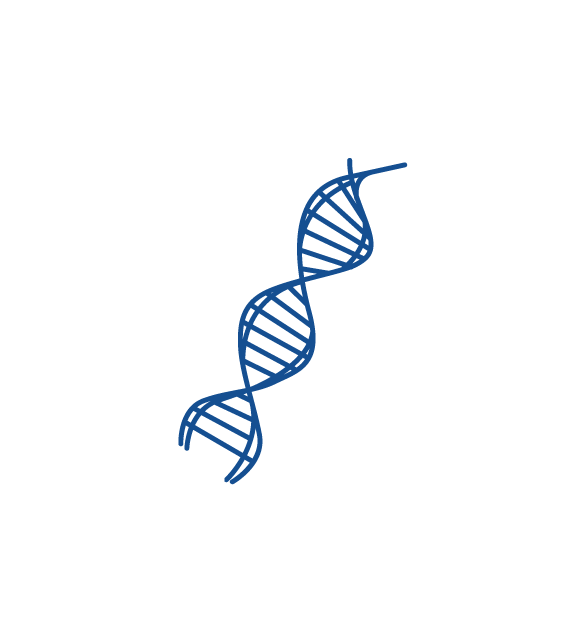All You Need to Know About Gluten
The Brief History of Gluten Intolerance
Since the dawn of time, back when humans were still hunting in the wild, our diet consisted mostly fruits, nuts, and sometimes, on a lucky day, meat. It was not until the first agricultural revolution around 12,000 BC, that humans began to learn to grow crops, like wheat. Such an agricultural revolution introduced new food sources and nutrients that the human body had never known before. Foods such as wheat became a staple of every meal. It was our intestines that had to do the hardest work adapting, developing itself to support the heavier digestion of these new nutrients. One such is the gluten protein, which has historically been recorded to result in intolerances or sensitivities in some individuals. Hence, Celiac Disease emerged as one of the most prevalent conditions in human health.
Doctors and scientists tried to figure out what causes the Celiac Disease and how to treat it. However, they weren’t able to determine the exact cause of the disease until around the time of World War II. . It was due to the shortage of bread in the Netherlands that made children with assumed Celiac Disease start to feel noticeably better. When distribution and consumption of bread continued, it was noted that the children had significantly worsened again with Celiac-like symptoms. It was later discovered that gluten plays an important role in the cause of Celiac Disease.
What is gluten?
Gluten is a type of glycoprotein found in the endosperm of plants. It consists of the combination of protein glutenin and gliadin. It has a tough, flexible and insoluble quality. The word ‘Gluten’ corresponds to the Latin root, "glue" which basically means "glue" because it acts like 'glue' to connect the parts of the food together. Thus helping the food maintain its shape and remain solid. They can be found in different types of crops like wheat, rye, spelt, kamut, barley and triticale grain. As for oats, even though it does not have gluten, it is often contaminated with gluten in the manufacturing process.
How can I get gluten intolerance?
Usually, the cells lining our intestines are tightly arranged together with a tight junction, acting as doors between two cells and as a barrier to prevent foreign matter from entering the body. When the body is unable to digest all of the gluten, it will pass on to the small intestine and stimulate a type of protein called Zonulin protein to destroy the Tight junction. Thus creating gaps between cells (similar to having a wound on the skin) and gluten escapes into the bloodstream. The immune system responds by releasing a substance that destroys gluten which causes internal inflammation. Researchers found that people with Celiac Disease have a higher rate of Zonulin in their body. The major stimulant for the secretion of Zonulin are bacteria in the intestine and gluten. In some cases, even in people without Celiac Disease, if given gluten and Gliadin, which are found in wheat, Zonulin production can be found as well, at lower levels than those with Celiac disease
Gluten Intolerance can be divided into 3 following types:
- Celiac Disease is found present in approximately 0.5-1% of the global population. Celiac Disease is a type of autoimmune disease caused by environmental factors or changes in the genetic code. You can now take genetic testing to find out if you have the disease.
- Wheat Allergy is an allergy that is caused by the protein in wheat. Unlike Celiac Disease, allergic reactions from wheat will occur immediately with a variety of symptoms ranging in different levels of severity from swelling, redness of the skin, swollen bronchioles to severe intolerances that cause difficulty breathing which can be life threatening. You can take a blood test for food allergies or take an allergy test with your skin (Skin Prick Test).
- Gluten Sensitivity or Non-Celiac Gluten Sensitivity (NCGS) is a condition in which the body does not digest gluten. The symptoms, however, are not as severe as Celiac Disease but if the body is unable to digest gluten for a long time, it can develop into Celiac disease.
Over the past 15 years, the number of people with Celiac Disease has increased fourfold as the consumption of wheat products continues to grow. Most of the foods in supermarkets contain gluten even in food supplements and even in cosmetics such as lipstick.
Complications caused by Celiac Disease
For some people, when eating gluten, their body produces an abnormal response to the immune system causing inflammation in the lining of the small intestine, making it unable to fully absorb nutrients like minerals and vitamins. Each person will have different symptoms, such as gas in the stomach, flatulence, nausea, vomiting, diarrhea, abdominal pain, restlessness, acne or acne scars with slow recovery, unable to concentrate, headache, migraine, inaccurate memory (Brain fog). If left without treatment, these symptoms can become chronic and can lead to various health issues such as osteoporosis, infertility, damaged nerves, inflammatory skin disease (Dermatitis), anemia, myalgia and migraine. If you want to be sure that you have gluten a intolerance, , you can consult a professional doctor. Your doctor can perform an allergy test for intolerance or IgG4 or food Intolerance if found that you are sensitive to gluten. Try to avoid foods containing gluten or food that has production processes that are at risk of gluten contamination.
Always read the ingredients on the label before purchasing any product, even the ones that say “Gluten Free”!
The following is a guide based on some popular foods. As a guide, it is best to check seasonings, sauces and condiments as some may contain gluten. In addition, it is important to note that the processing of certain food products as they may contain gluten contamination.
Flour
Contains Gluten
- Wheat
- Rye
- Spelt
- Kamut
- Barley, Oats *
- Triticale
- Couscous
- Gnocchi
No Gluten
- Rice
- Sticky rice
- Buckwheat
- Quinoa
- Beans
- Oat bran* (gluten-free)
- Lupine flour
- Guar gum
- Arrowroot
- Apioca flour
- Banana flour
- Coconut flour
- Hemp flour
- Chickpea flour
- Soy flour
- Almond flour
- Quinoa flour
- Qpinach flour
Noodles
Contains Gluten
- Ramen
- Udon
- Soba*
- Noodles
- All kinds of pasta
- Dumplings
*Oats and Soba are naturally gluten-free, but to gluten contamination during production may also occur.
No Gluten
- Rice noodles
- Glass noodles
- Soba (gluten-free)
Bread and Bakery
Contains Gluten
- Cakes
- Cookies
- Pies
- Brownies
- Pancakes
- Waffles
- Crepes
- Patongo
- Buns
- Croissants
- Pita
- Naan
- Bagels
- Tortillas
- Muffins
- Donuts
- Rolls
- Bread Crumbs
- Crackers
- Pretzels
- Biscuits
- French Toast
No Gluten
- Any gluten-free bread
Cereal & Granola
Contains Gluten
- Granola
- Cornflakes and puffed rice (rice with malt as an ingredient)
- Processed French fries
No Gluten
- Gluten-free granola and Cornflakes
- Oat rolls
- Rice cereals
- Millet cereals
- Puffed rice
- Crispy rice
Meats
Contains Gluten
- Processed meats
- Vegetable protein
- Meatballs
- Fried potatoes
- Sausages
- Nuggets
- Tempura
- Marinated meats (such as seasoned minced pork, tenderized pork or grilled chicken with soy sauce)
- Some egg dishes (some may contain flour or seasoning)
No Gluten
- Fish
- Shrimp
- Pork
- Chicken
- Egg
Fruits & Vegetables
Contains Gluten
- Processed fruits and deep-fried fruits or vegetables
No Gluten
- Fresh vegetables and fruits
Confectionary
Contains Gluten
- Ice cream
- Candy
- Fried banana
- Fried potato
- Moon cake
No Gluten
- Gluten-free ice cream
- Gluten-free desserts or candy
Sauces
Contains Gluten
- Soy Sauce
- Oyster sauce
- Seasoning sauce
- Teriyaki sauce
- Dressing
- Cream sauce
- Soup cubes
- Gravy
- Roasted pork rice sauce
- Malt vinegar
No Gluten
- Fish sauce
- Spices
- Soy sauce (gluten-free recipe)
- Distilled vinegar
- Ketchup
- Mayonnaise
Drinks
Contains Gluten
- Beer
- Brewer’s Yeast
- Wine cooler
- Malt beverage
No Gluten
- Beer (gluten-free recipe)
- Wine
- Whiskey
- Vodka
Sources:
- Guandalini S. A brief history of Celiac disease. Impact. 2007;3:1-4.
- Fasano A. Zonulin, regulation of tight junctions, and autoimmune diseases. Annals of the New York Academy of Sciences. 2012;1258(1):25.
- Catassi C, Kryszak D, Bhatti B, Sturgeon C, Helzlsouer K, Clipp SL, et al. Natural history of celiac disease autoimmunity in a USA cohort followed since 1974. Annals of medicine. 2010;42(7):530-8.
- Celiac Disease Foundation. Sources of Gluten [Internet]. 2020 [cited 2020 Jun 23]. Available from: https://celiac.org/gluten-free-living/what-is-gluten/sources-of-gluten/
Recommended Packages & Promotions

 คลินิกสุขภาพเชิงป้องกัน และฟื้นฟู
คลินิกสุขภาพเชิงป้องกัน และฟื้นฟู
ตรวจวิเคราะห์ปริมาณวิตามินและสารต้านอนุมูลอิสระ 10 ชนิด พร้อมรับ วิตามินเฉพาะบุคคล 1 เดือ...





